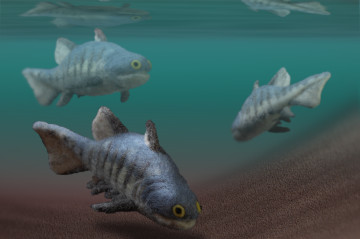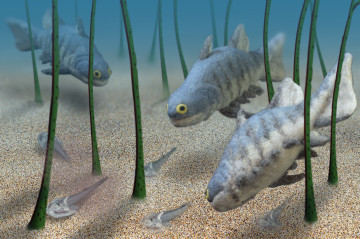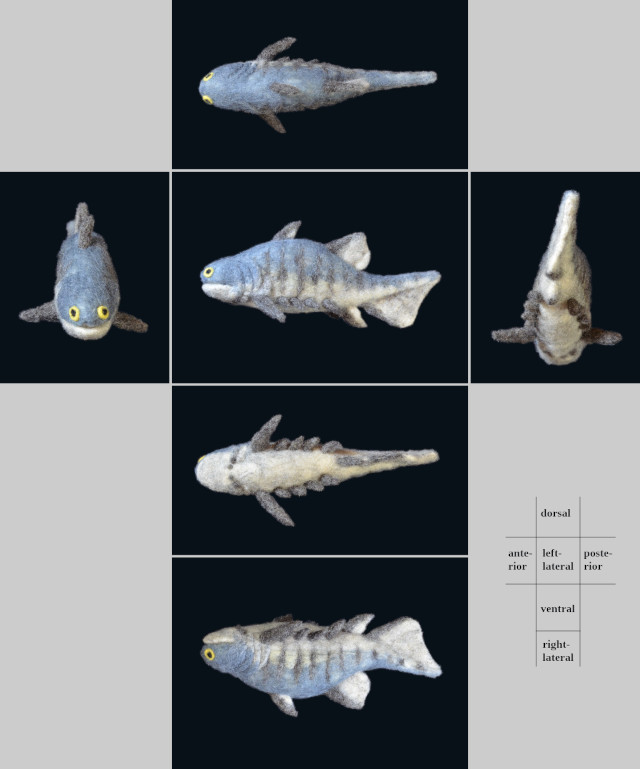Ptomacanthus anglicus
Ptomacanthus is a relatively large acanthodian, reaching up to 30 cm in length 3), and the dorsal outline is highly arch 1). The head part is also broad, and the eyes are large as in other acanthodians 3).
There are two dorsal spines, a pair each of pectoral and pelvic spines (webbing are not identified), a anal spine, three pairs of intermediate spines between the pectoral and pelvic spines, two rows of prepectoral spines, and a median spine 1), 3).
Ptomacanthus probably had lived in the freshwater shallows arround the estuaries 2) and swallowed other animals such as a placoderm Cephalaspis 2), 3).
created in June - December 2023.
References:
- Brazeau MD (2012) A revision of the anatomy of the Early Devonian jawed vertebrate Ptomacanthus anglicus Miles. Palaeontology 55(2) : 355 - 367.(DOI:10.1111/j.1475-4983.2012.01130.x.)
- Denison RH (1956) A review of the habitat of the earliest vertebrates. In Fieldiana: Geology; Vol.11 No.8. Chicago Natural History Museum. Chicago.
- Miles RS (1973) Articulated acanthodian fishes from the Old Red Sandstone of England, with a review of the structure and evolution of the acanthodian shoulder-girdle. Bulletin of the British Museum (Natural History) 24 :111 – 213.





